From Traditional BI to GenBI Embracing a Smarter, More Human Approach
How Generative BI Transforms Data Analytics with AI-Powered Insights and Human-Centric Decision Making

Howard Chi
Updated: Dec 18, 2025
Published: Feb 13, 2025
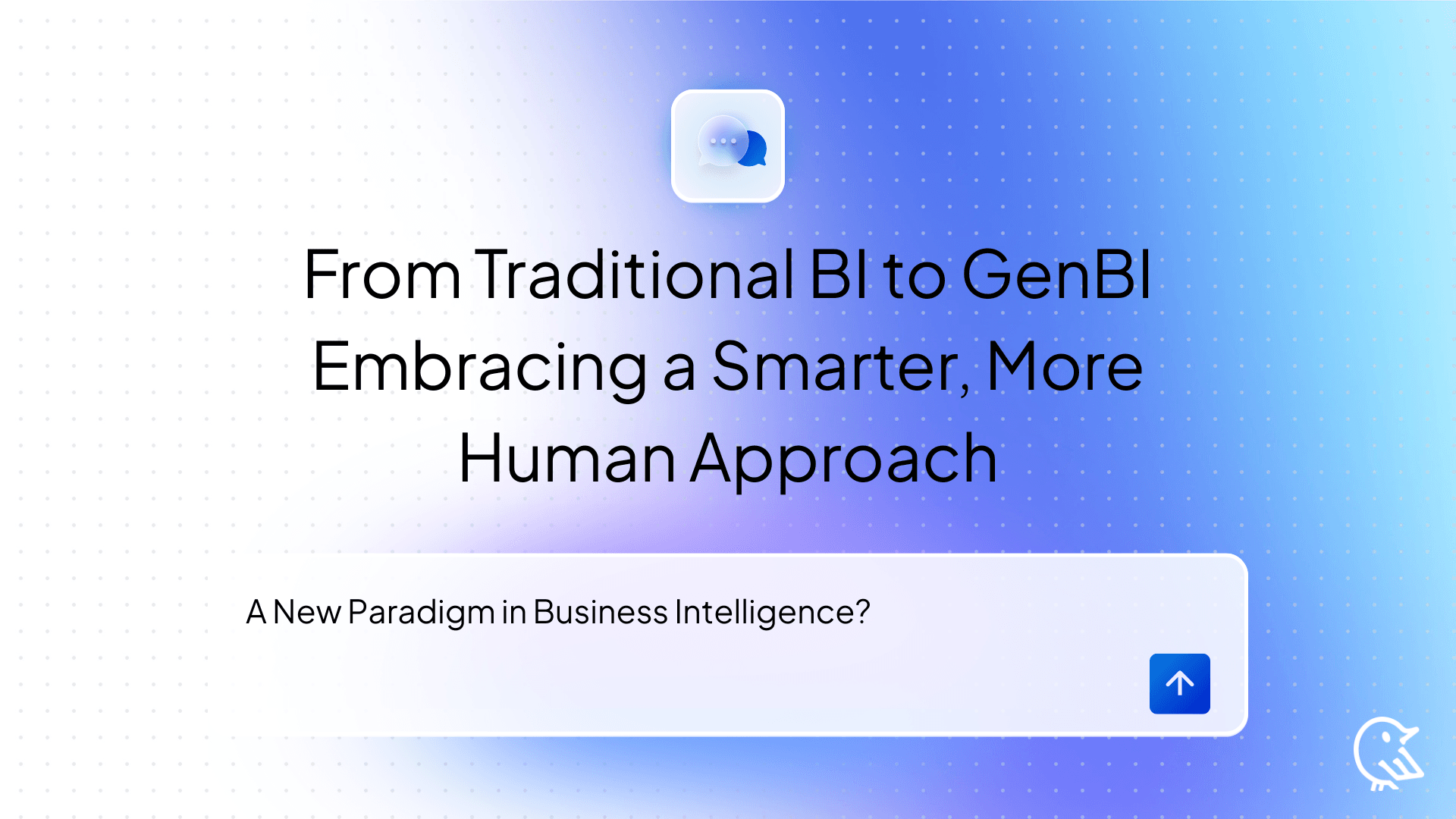
At Wren AI, we’ve spent months rethinking what Business Intelligence (BI) can — and should — be. Traditional BI has long served as the workhorse for data reporting and analysis, but it’s starting to feel like we’re trying to fit modern problems into an outdated framework. That’s why we’re so excited about GenBI — Generative Business Intelligence — which reimagines BI with advanced AI, natural language, and a workflow that learns and evolves just like a human team member.
In this post, I’d like to share our journey from how we think about the transition from traditional BI to GenBI and why the future belongs to solutions that are as flexible and intuitive as the people using them. I’ll focus on five key design principles that set GenBI apart:
- The power of the semantic layer
- The promise of an agentic layer
- Keeping humans in the loop
- An agentic workflow that truly collaborates
- A conversational interface that speaks your language
Let’s dive in.
Rethinking BI: The Limitations of Traditional Approaches
Traditional BI systems have been a mainstay for decades. They rely on static dashboards and pre-built reports, and they require specialized know-how to extract actionable insights. In many organizations, you still see data locked behind rigid schemas and endless spreadsheets. Sure, they work for routine reporting, but when the business environment changes rapidly, these systems can’t keep up.
The shortcomings are clear:
- Inflexibility: The underlying data models are often static, making it hard to respond quickly to new business questions.
- Complexity for non-experts: Not everyone has the training to build or interpret complex reports.
- Slow evolution: Creating new reports or updating dashboards can take days if not weeks.
GenBI is designed to break these barriers by being more agile, accessible, and, importantly, more human.
Introducing GenBI: A New Paradigm in Business Intelligence
Generative Business Intelligence, or GenBI, represents a radical shift in how organizations harness data for decision-making. Unlike traditional BI — which depends on static dashboards, predefined queries, and manual report generation — GenBI leverages advanced artificial intelligence, natural language processing, and proactive workflows to create an adaptive and interactive data ecosystem.
What is GenBI?
GenBI is designed to make data work smarter and faster. It combines real-time data processing with generative AI capabilities that not only analyze past trends but also predict future outcomes. This approach turns data into a dynamic, living asset that continually refines itself through ongoing user interactions. In essence, GenBI acts as a digital data analyst: it understands your business context, anticipates needs, and actively supports decision-making by suggesting or even initiating actions when necessary.
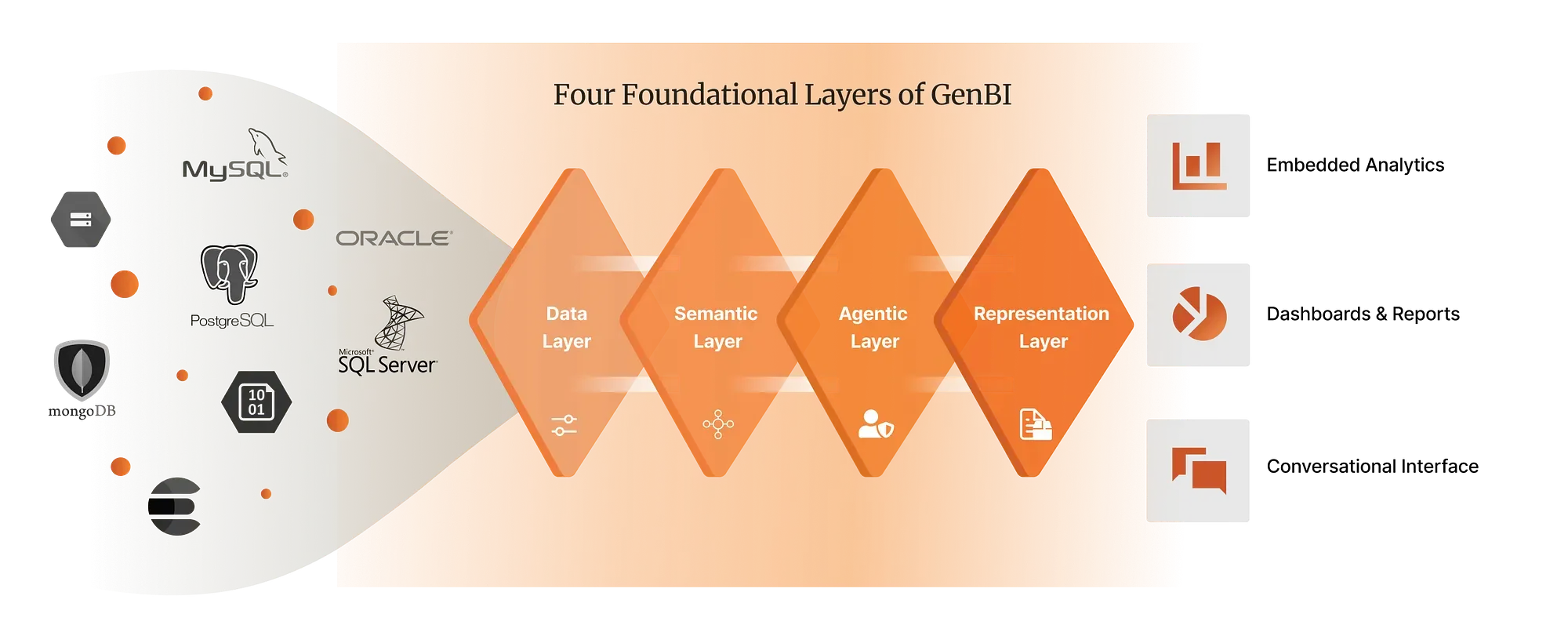
The four foundational layers of GenBI, learn more check post here
Design Differences: GenBI vs. Traditional BI
The transition from traditional BI to GenBI is as much about design philosophy as it is about technology. Here are the key design differences:
Flexibility and Adaptability:
Traditional BI systems often operate on rigid, predefined schemas that require manual updates. GenBI, on the other hand, is built to adapt on the fly — integrating new data sources and evolving in response to changing business questions without significant reengineering.
Conversational Interfaces:
GenBI empowers users by enabling them to interact with their data in plain language. Instead of navigating through complex dashboards and learning technical query languages, users can simply ask questions as they would in a natural conversation, making data insights accessible to non-technical stakeholders.
Proactive, Agentic Workflows:
Rather than being a passive repository of reports, GenBI actively monitors key performance indicators. Its AI agents function like human data analysts — interpreting ambiguous queries, seeking clarifications, and even suggesting actions to bridge the gap between insight and implementation. This proactive workflow transforms BI from a reactive tool into a dynamic business partner.
Human-Like Intelligence with Memory:
One of the most compelling features of GenBI is its memory layer. Similar to how human analysts rely on past experiences to inform their decisions, GenBI remembers historical interactions and feedback, using this context to refine its analysis and recommendations over time. This iterative learning process makes the system increasingly accurate and aligned with your organizational needs.
Seamless Integration and Holistic Context:
GenBI’s robust semantic layer creates a living map of your organization’s data — capturing relationships, context, and domain knowledge in a way that traditional BI rarely achieves. This holistic understanding allows the system to generate insights that are both deeper and more relevant.
By reimagining the core architecture of business intelligence, GenBI isn’t just an upgrade — it’s a reinvention of how data drives business decisions. In the following sections, we’ll explore how the semantic layer, agentic workflow, and other design elements of GenBI work together to deliver this transformative experience.
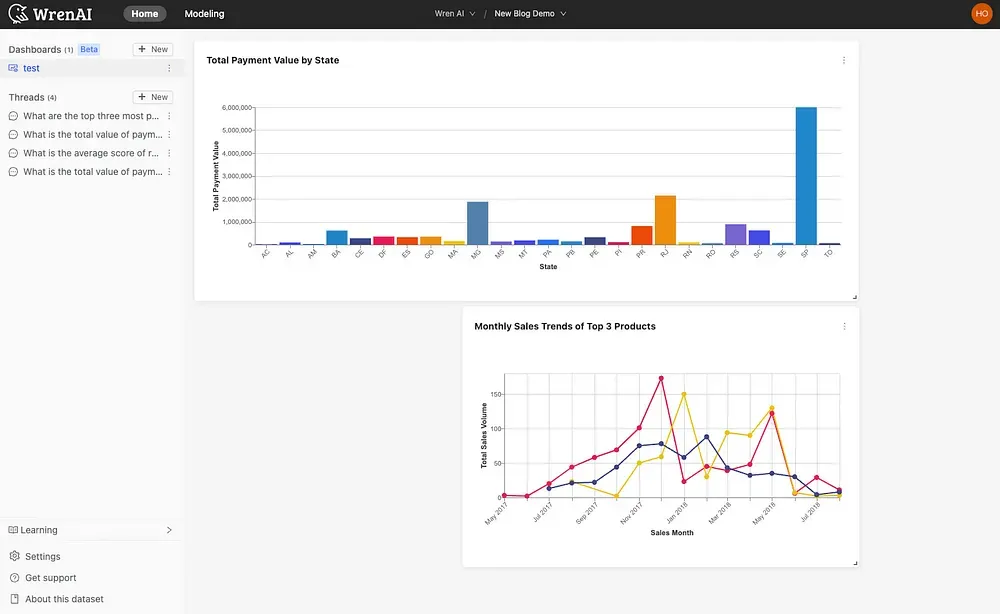
Wren AI — GenBI Interface
The Semantic Layer: Giving Data Real Meaning
Imagine trying to answer a business question when you have to first decipher a jumbled mess of technical jargon. That’s where the semantic layer comes in. In traditional BI, it might simply rename “cust_id” to “Customer ID.” In GenBI, however, the semantic layer is so much more. It’s a living map of your organization’s data, weaving together relationships, context, and domain knowledge.
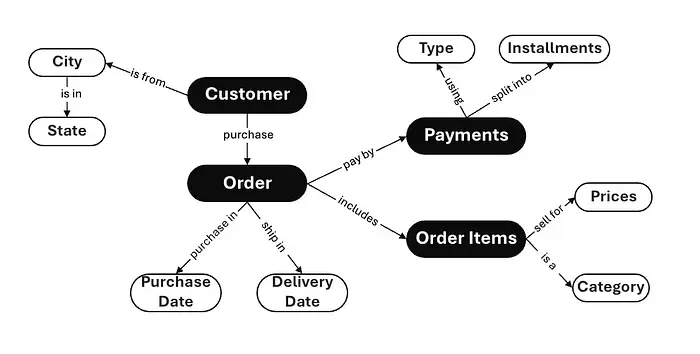
This enriched layer lets the system understand complex queries naturally. Ask, “Which customer segment drove our best quarterly growth?” and GenBI will connect the dots between customer behavior, sales data, and market trends. Every interaction with the system refines this knowledge, making your data smarter over time. At Wren AI, we’ve invested heavily in creating a semantic layer that learns from every query, ensuring that your insights get sharper with each use.
Human-in-the-Loop: Merging Machine Precision with Human Insight
No matter how smart an AI gets, there’s still nothing like human intuition. In a GenBI system, automation is powerful, but we never lose sight of the value of human oversight. The AI handles repetitive tasks and suggests actions, but real people — armed with domain expertise and strategic vision — make the final call.
There are several reasons why keeping humans in the loop is essential:
- Context matters: AI can identify patterns, but it may not grasp all the nuances of your industry.
- Quality assurance: Humans ensure that every recommendation makes sense, adjusting for ethical considerations and potential blind spots.
- Creative problem-solving: Sometimes, the best solutions come from thinking outside the algorithm.
Agentic Workflow: An AI That Acts Like a Human
What really sets GenBI apart is how it manages the workflow — especially when it comes to handling ambiguous queries and evolving through interaction. Our approach is designed to mimic how a thoughtful, human colleague would work through a problem.
Here’s how it works:
- Understanding Your Intent: When you ask a question, the system first parses your language to understand exactly what you’re after. If there’s any ambiguity — perhaps a term that could mean more than one thing — it will ask clarifying questions, much like a real human would.
- Planning Data Retrieval: Once your intent is clear, GenBI taps into the semantic layer to plan how best to fetch the necessary data. It considers various strategies and discusses them with you, ensuring that the approach aligns with your expectations.
- Generating the Query: The system then generates the SQL (or the appropriate query) needed to retrieve the data. It’s not just about pulling numbers — it’s about understanding relationships and context.
- Iterative Feedback: If the result isn’t quite what you expected, you have the option to refine your question or add more context. The system listens, adjusts, and learns from each interaction.
- Continuous Improvement: Every interaction feeds back into the system, making it smarter over time. Eventually, GenBI builds a rich, comprehensive understanding of your organization’s unique context, ensuring that future queries hit the mark right away.
This isn’t just automation — it’s a collaborative process where the AI behaves like a helpful colleague, asking questions, clarifying needs, and even learning from missteps. It’s about making the technology work with you, not for you.
Conversational Interface: Data in Plain Language
One of the biggest hurdles in traditional BI is the steep learning curve associated with technical interfaces. GenBI transforms that experience by allowing you to interact with your data in everyday language. Instead of navigating complicated menus or coding SQL, you simply ask a question as you would in a conversation.
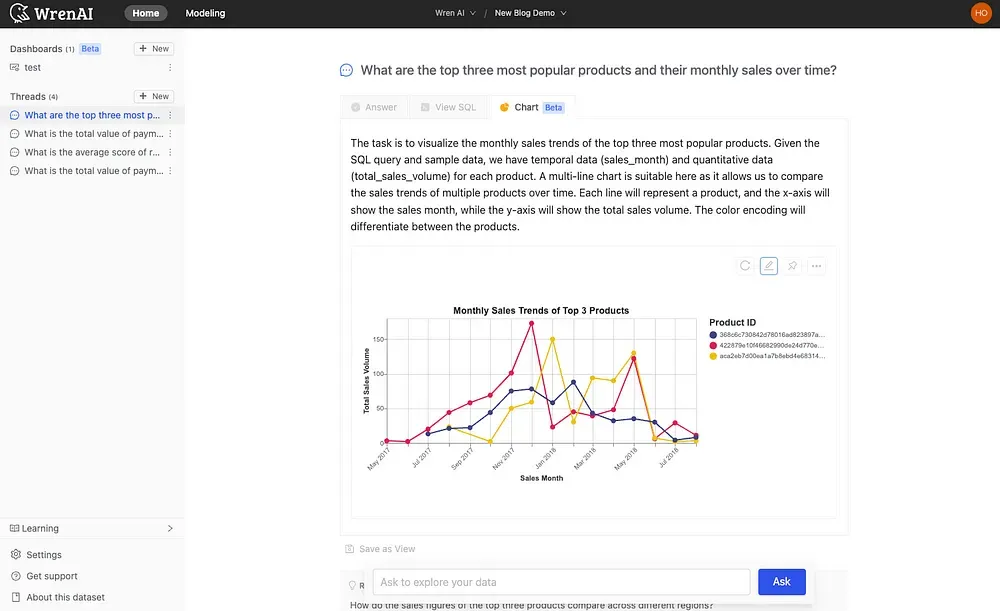
Wren AI — Conversational Interface
Imagine asking, “Which region performed best this quarter?” and getting an immediate, easy-to-understand response. Need to dive deeper? Follow up with, “Can you break that down by product line?” The system adapts instantly, turning complex data into digestible insights.
This conversational style not only makes BI more accessible to everyone in your organization but also encourages more frequent and meaningful data exploration.
Bringing It All Together: The GenBI Advantage
In moving from traditional BI to GenBI, we’re not just adopting new technology — we’re embracing a new philosophy. Here’s what makes our approach at Wren AI truly transformative:
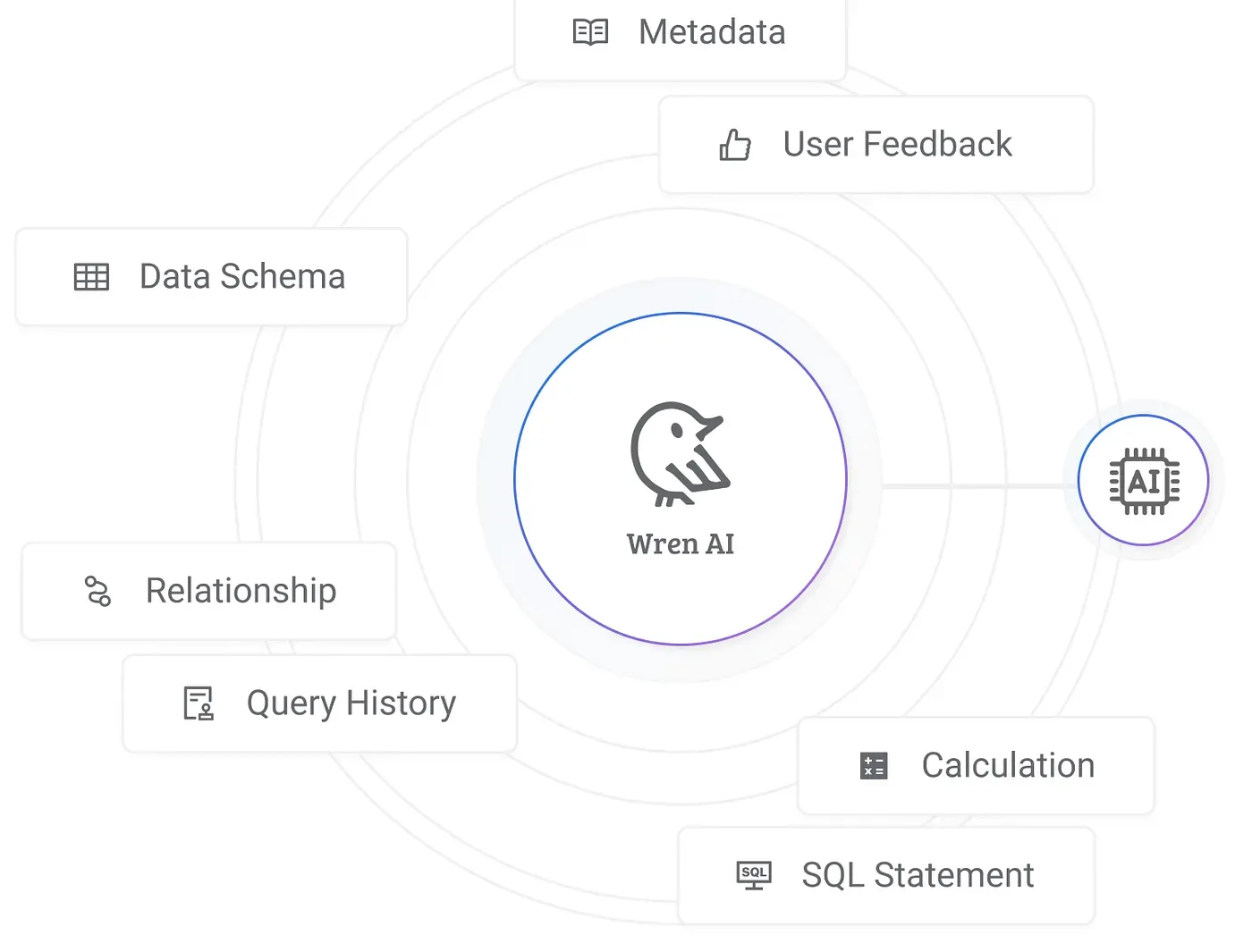
- Dynamic Semantic Layer: A living map of your data that grows and refines with every interaction.
- Human-Centered Oversight: A blend of AI efficiency and human wisdom ensures that insights are both timely and accurate.
- Smart, Human-Like Workflow: An agentic workflow that understands intent, clarifies ambiguities, and learns continuously.
- Natural Conversational Interface: Making advanced analytics accessible to everyone, regardless of technical skill.
By integrating these elements, GenBI is not just about delivering data — it’s about driving smart decisions that propel your business forward. At Wren AI, we’re passionate about building a platform that empowers every team member, turning data into a collaborative conversation and a catalyst for growth.
Conclusion: Embrace the Future with Wren AI
At Wren AI, we’re not just imagining the future of business intelligence — we’re building it, day in and day out. While our complete implementation is still a work in progress, our dedicated team is tirelessly pursuing our vision of a dynamic, intelligent, and interactive BI platform that transforms how you harness your data.
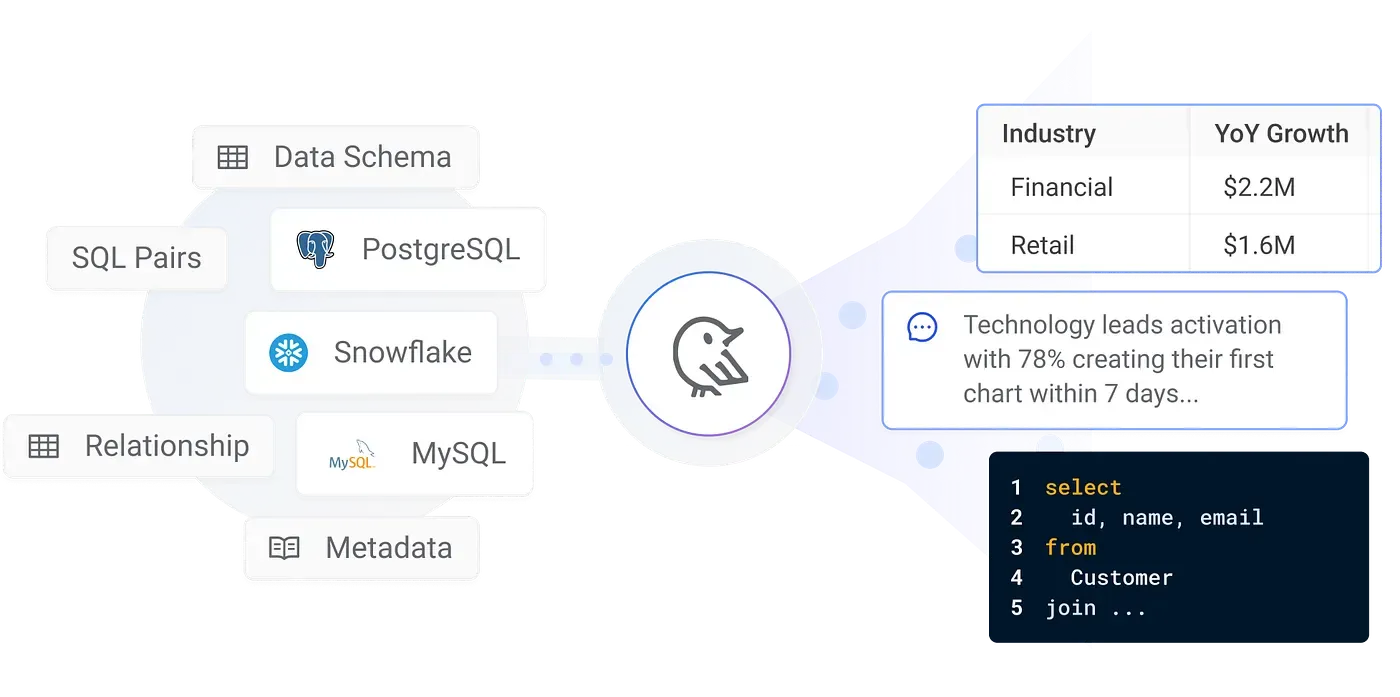
Wren AI — the Future of Business Intelligence
We invite you to be a part of this journey:
- Explore Our Open Source Repository: Check out our work on GitHub at https://github.com/Canner/WrenAI. If you like what you see, please consider starring our repo and contributing with your ideas and expertise.
- Discover Our Cloud Solution: For those looking for an out-of-the-box, cloud-based solution, learn more at https://getwren.ai/.
Join us as we push the boundaries of business intelligence with GenBI. Your feedback, support, and contributions are vital as we continue to innovate and shape the future of data-driven decision-making. Together, we can create a smarter, more agile, and truly transformative BI experience.
Supercharge Your
Data with AI Today
Join thousands of data teams already using Wren AI to make data-driven decisions faster and more efficiently.
Start Free TrialRelated Posts
Related Posts
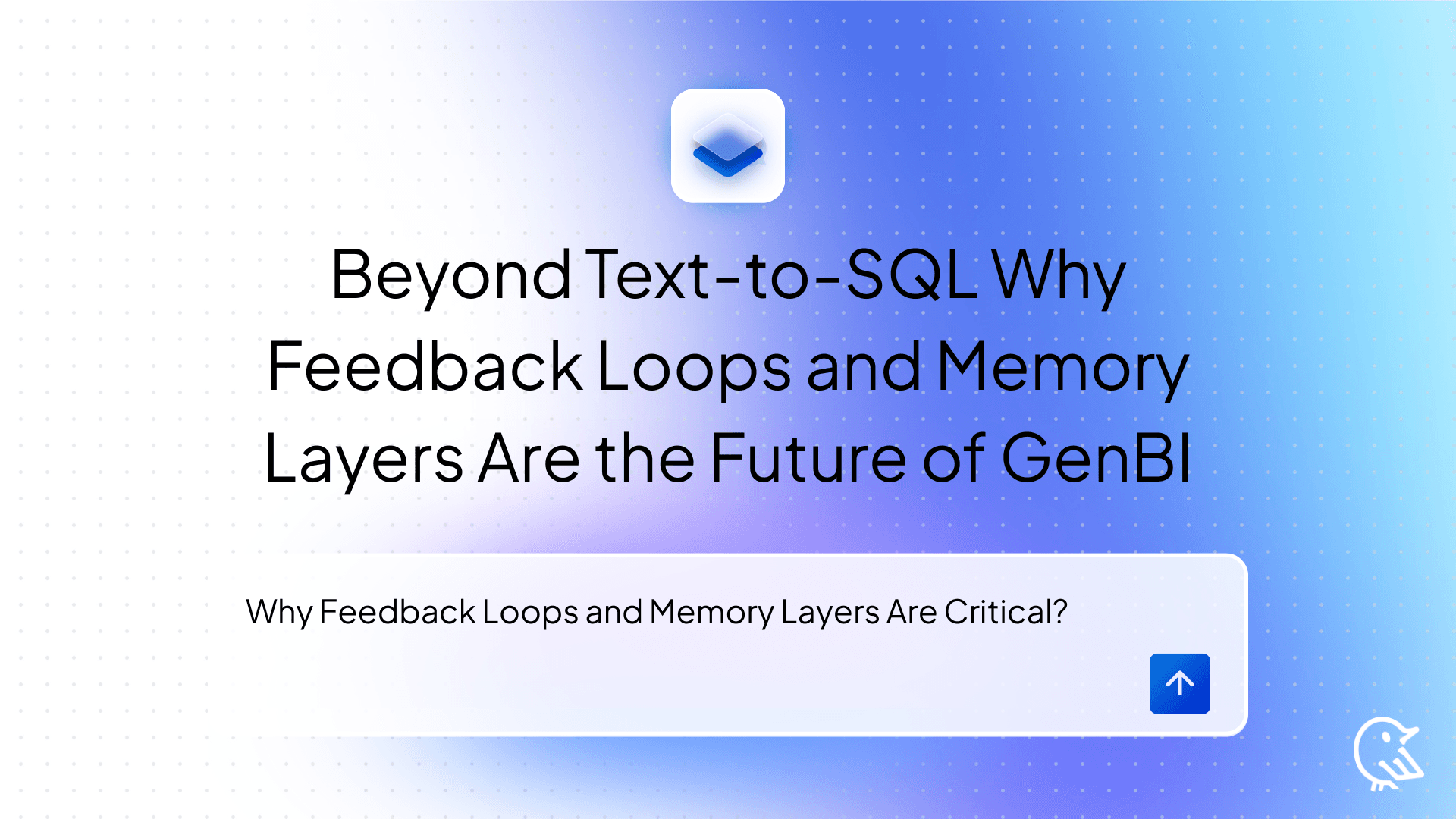
Beyond Text-to-SQL: Why Feedback Loops and Memory Layers Are the Future of GenBI
How Wren AI’s Innovative Approach to Question-SQL Pairs and Contextual Instructions Delivers 10x More Accurate Generative Business Intelligence
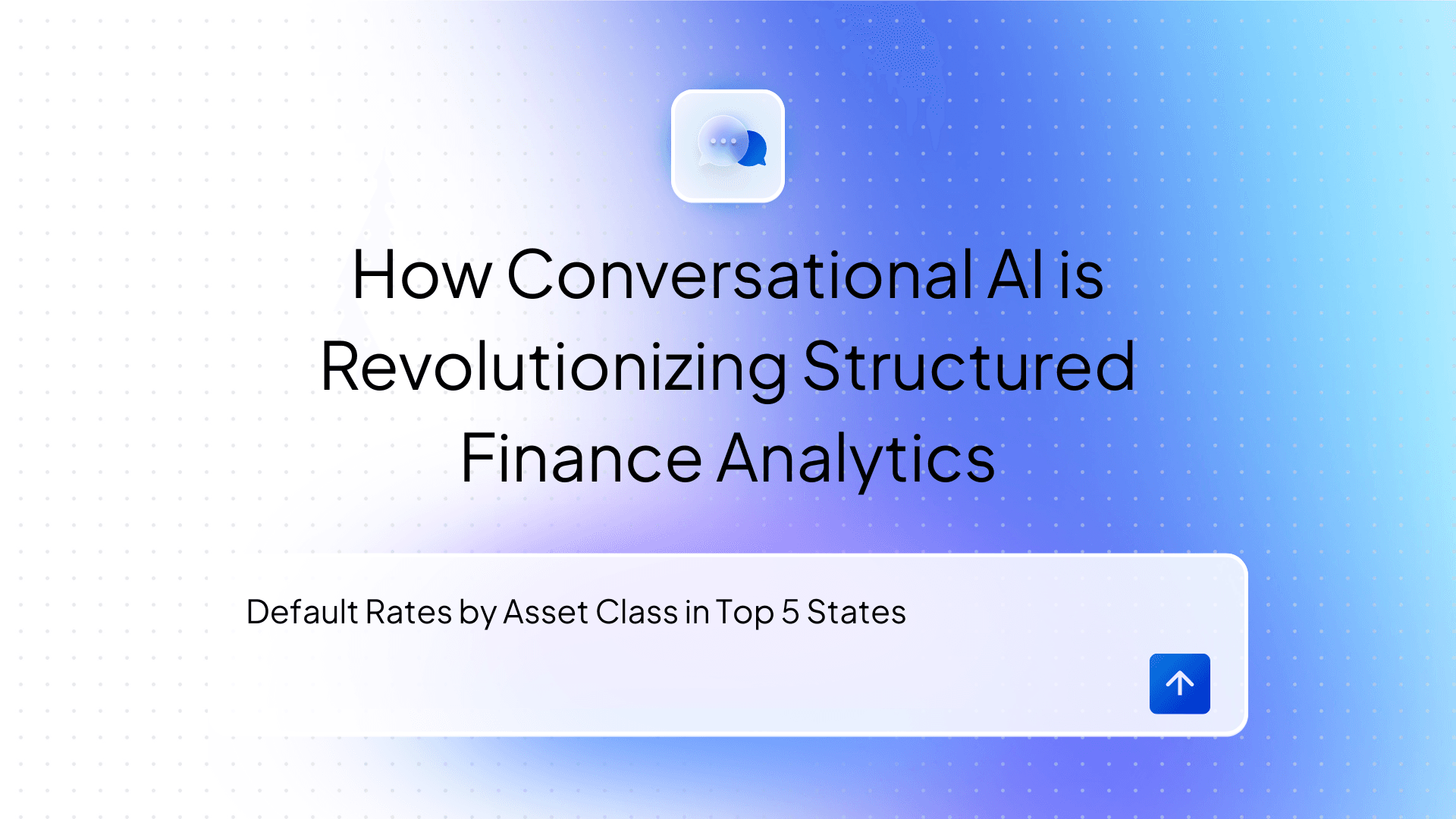
Beyond Dashboards How Conversational AI is Revolutionizing Structured Finance Analytics
How Wren AI transforms complex financial data into instant, actionable insights through natural language — no technical expertise required
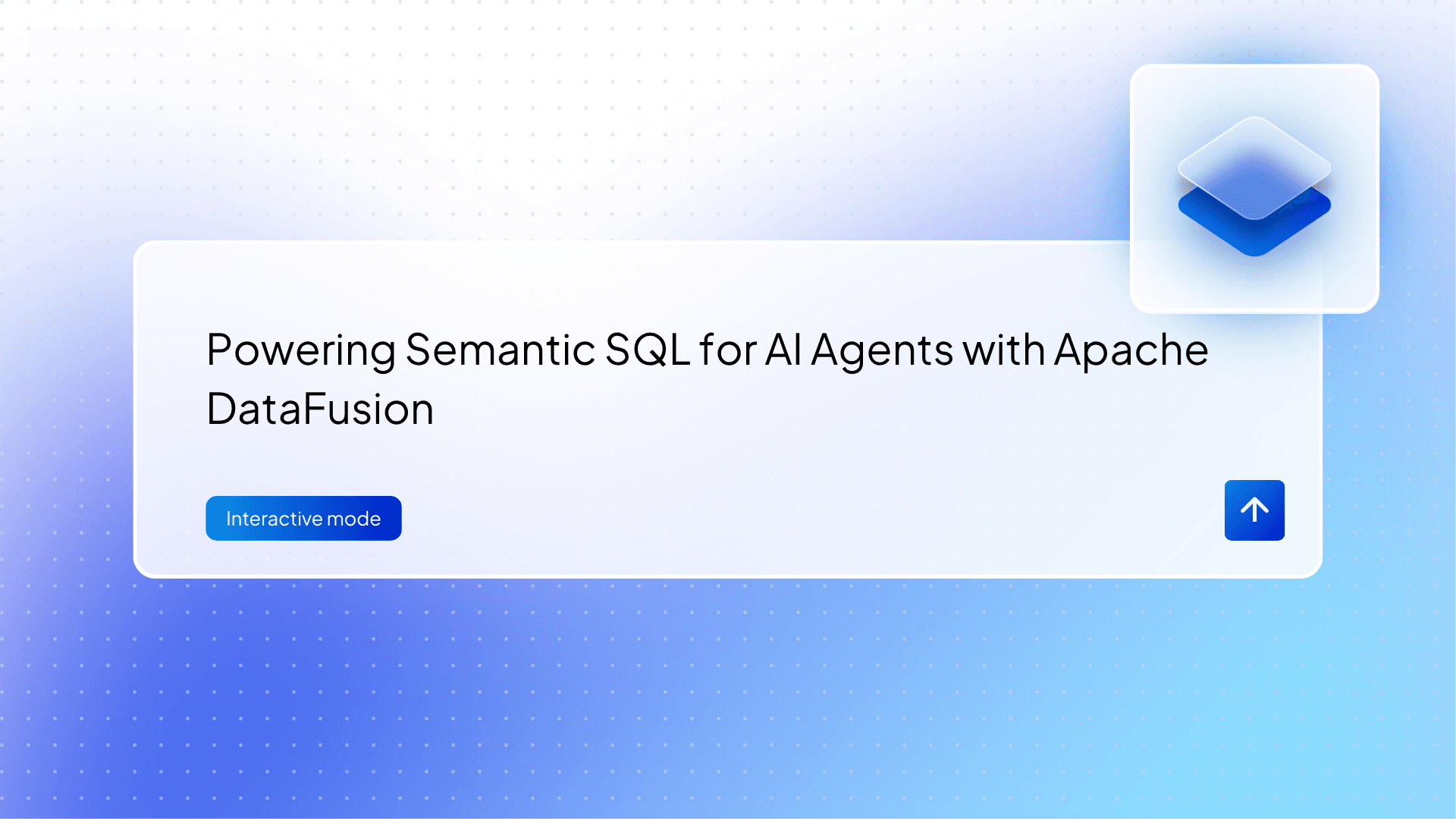
Powering Semantic SQL for AI Agents with Apache DataFusion
Bridge the Gap Between AI and Enterprise Data with a High-Performance Semantic Layer and Unified SQL Interface for Model Context Protocol (MCP)

